#san diego software development
Explore tagged Tumblr posts
Text
San Diego Software Development Company
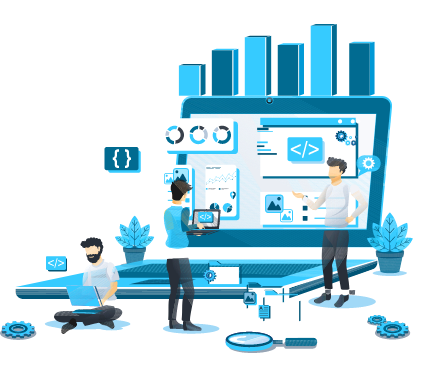
BitCot is a top software development company in San Diego. Our goal is to bring your ideas to life by providing creative solutions to businesses of all sizes. Our team of skilled software developers is enthusiastic about making advanced software to meet your needs. We are dedicated to delivering high-quality and affordable solutions that improve your business operations, delight your customers, and help your business grow. Whether you are a startup or a big company, we can assist you in taking your business to the next level with our custom software development services.
For more information visit our website: https://www.bitcot.com/software-development-san-diego/
0 notes
Text
Custom Software Development Solutions
High Clarity offers premium internet web development services, specializing in custom software development solutions tailored to meet your business needs. Our expert team creates innovative, scalable, and user-friendly applications designed to enhance your online presence and streamline operations. From startups to established enterprises, we provide end-to-end solutions, including software design, development, and maintenance. With a commitment to quality and efficiency, High Clarity ensures your software aligns with your goals. Partner with us to bring your vision to life through cutting-edge technology and customized strategies. Transform your ideas into reality with High Clarity’s reliable development services.
0 notes
Text
Best Software Development Company | SynergyTop
Level up your business with SynergyTop, a leading software development company. They boost your success by creating personalized and innovative solutions. The company developers use the latest technologies to build impressive websites and mobile apps that surpass customer expectations. For more details Call 619-349-4911 or +91 7879123770
#software development company#Custom Software Development#Software Development#custom software development company#enterprise software development#saas application development company#software development agency#software development consulting services#software development firm#software development services#software development services company#software companies in san diego#top 10 software companies in san diego#software development services company san diego#top it company in san diego#it software companies in san diego#top software companies in san diego#software companies in san diego california#san diego software companies#top 10 it software companies in san diego#software development company san diego#software development company in san diego#san diego software development companies#best software company in san diego#best software development company in san diego#it software company in san diego#san diego software development company#software developer company in san diego#best software companies in san diego#best it companies in san diego
0 notes
Text
"Open" "AI" isn’t
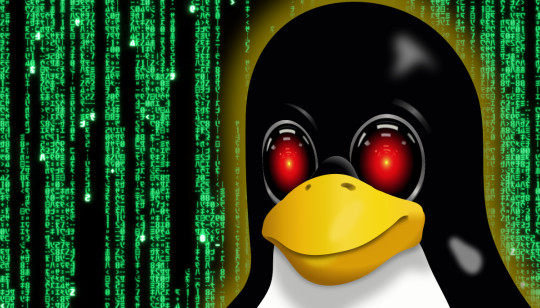
Tomorrow (19 Aug), I'm appearing at the San Diego Union-Tribune Festival of Books. I'm on a 2:30PM panel called "Return From Retirement," followed by a signing:
https://www.sandiegouniontribune.com/festivalofbooks

The crybabies who freak out about The Communist Manifesto appearing on university curriculum clearly never read it – chapter one is basically a long hymn to capitalism's flexibility and inventiveness, its ability to change form and adapt itself to everything the world throws at it and come out on top:
https://www.marxists.org/archive/marx/works/1848/communist-manifesto/ch01.htm#007
Today, leftists signal this protean capacity of capital with the -washing suffix: greenwashing, genderwashing, queerwashing, wokewashing – all the ways capital cloaks itself in liberatory, progressive values, while still serving as a force for extraction, exploitation, and political corruption.
A smart capitalist is someone who, sensing the outrage at a world run by 150 old white guys in boardrooms, proposes replacing half of them with women, queers, and people of color. This is a superficial maneuver, sure, but it's an incredibly effective one.
In "Open (For Business): Big Tech, Concentrated Power, and the Political Economy of Open AI," a new working paper, Meredith Whittaker, David Gray Widder and Sarah B Myers document a new kind of -washing: openwashing:
https://papers.ssrn.com/sol3/papers.cfm?abstract_id=4543807
Openwashing is the trick that large "AI" companies use to evade regulation and neutralizing critics, by casting themselves as forces of ethical capitalism, committed to the virtue of openness. No one should be surprised to learn that the products of the "open" wing of an industry whose products are neither "artificial," nor "intelligent," are also not "open." Every word AI huxters say is a lie; including "and," and "the."
So what work does the "open" in "open AI" do? "Open" here is supposed to invoke the "open" in "open source," a movement that emphasizes a software development methodology that promotes code transparency, reusability and extensibility, which are three important virtues.
But "open source" itself is an offshoot of a more foundational movement, the Free Software movement, whose goal is to promote freedom, and whose method is openness. The point of software freedom was technological self-determination, the right of technology users to decide not just what their technology does, but who it does it to and who it does it for:
https://locusmag.com/2022/01/cory-doctorow-science-fiction-is-a-luddite-literature/
The open source split from free software was ostensibly driven by the need to reassure investors and businesspeople so they would join the movement. The "free" in free software is (deliberately) ambiguous, a bit of wordplay that sometimes misleads people into thinking it means "Free as in Beer" when really it means "Free as in Speech" (in Romance languages, these distinctions are captured by translating "free" as "libre" rather than "gratis").
The idea behind open source was to rebrand free software in a less ambiguous – and more instrumental – package that stressed cost-savings and software quality, as well as "ecosystem benefits" from a co-operative form of development that recruited tinkerers, independents, and rivals to contribute to a robust infrastructural commons.
But "open" doesn't merely resolve the linguistic ambiguity of libre vs gratis – it does so by removing the "liberty" from "libre," the "freedom" from "free." "Open" changes the pole-star that movement participants follow as they set their course. Rather than asking "Which course of action makes us more free?" they ask, "Which course of action makes our software better?"
Thus, by dribs and drabs, the freedom leeches out of openness. Today's tech giants have mobilized "open" to create a two-tier system: the largest tech firms enjoy broad freedom themselves – they alone get to decide how their software stack is configured. But for all of us who rely on that (increasingly unavoidable) software stack, all we have is "open": the ability to peer inside that software and see how it works, and perhaps suggest improvements to it:
https://www.youtube.com/watch?v=vBknF2yUZZ8
In the Big Tech internet, it's freedom for them, openness for us. "Openness" – transparency, reusability and extensibility – is valuable, but it shouldn't be mistaken for technological self-determination. As the tech sector becomes ever-more concentrated, the limits of openness become more apparent.
But even by those standards, the openness of "open AI" is thin gruel indeed (that goes triple for the company that calls itself "OpenAI," which is a particularly egregious openwasher).
The paper's authors start by suggesting that the "open" in "open AI" is meant to imply that an "open AI" can be scratch-built by competitors (or even hobbyists), but that this isn't true. Not only is the material that "open AI" companies publish insufficient for reproducing their products, even if those gaps were plugged, the resource burden required to do so is so intense that only the largest companies could do so.
Beyond this, the "open" parts of "open AI" are insufficient for achieving the other claimed benefits of "open AI": they don't promote auditing, or safety, or competition. Indeed, they often cut against these goals.
"Open AI" is a wordgame that exploits the malleability of "open," but also the ambiguity of the term "AI": "a grab bag of approaches, not… a technical term of art, but more … marketing and a signifier of aspirations." Hitching this vague term to "open" creates all kinds of bait-and-switch opportunities.
That's how you get Meta claiming that LLaMa2 is "open source," despite being licensed in a way that is absolutely incompatible with any widely accepted definition of the term:
https://blog.opensource.org/metas-llama-2-license-is-not-open-source/
LLaMa-2 is a particularly egregious openwashing example, but there are plenty of other ways that "open" is misleadingly applied to AI: sometimes it means you can see the source code, sometimes that you can see the training data, and sometimes that you can tune a model, all to different degrees, alone and in combination.
But even the most "open" systems can't be independently replicated, due to raw computing requirements. This isn't the fault of the AI industry – the computational intensity is a fact, not a choice – but when the AI industry claims that "open" will "democratize" AI, they are hiding the ball. People who hear these "democratization" claims (especially policymakers) are thinking about entrepreneurial kids in garages, but unless these kids have access to multi-billion-dollar data centers, they can't be "disruptors" who topple tech giants with cool new ideas. At best, they can hope to pay rent to those giants for access to their compute grids, in order to create products and services at the margin that rely on existing products, rather than displacing them.
The "open" story, with its claims of democratization, is an especially important one in the context of regulation. In Europe, where a variety of AI regulations have been proposed, the AI industry has co-opted the open source movement's hard-won narrative battles about the harms of ill-considered regulation.
For open source (and free software) advocates, many tech regulations aimed at taming large, abusive companies – such as requirements to surveil and control users to extinguish toxic behavior – wreak collateral damage on the free, open, user-centric systems that we see as superior alternatives to Big Tech. This leads to the paradoxical effect of passing regulation to "punish" Big Tech that end up simply shaving an infinitesimal percentage off the giants' profits, while destroying the small co-ops, nonprofits and startups before they can grow to be a viable alternative.
The years-long fight to get regulators to understand this risk has been waged by principled actors working for subsistence nonprofit wages or for free, and now the AI industry is capitalizing on lawmakers' hard-won consideration for collateral damage by claiming to be "open AI" and thus vulnerable to overbroad regulation.
But the "open" projects that lawmakers have been coached to value are precious because they deliver a level playing field, competition, innovation and democratization – all things that "open AI" fails to deliver. The regulations the AI industry is fighting also don't necessarily implicate the speech implications that are core to protecting free software:
https://www.eff.org/deeplinks/2015/04/remembering-case-established-code-speech
Just think about LLaMa-2. You can download it for free, along with the model weights it relies on – but not detailed specs for the data that was used in its training. And the source-code is licensed under a homebrewed license cooked up by Meta's lawyers, a license that only glancingly resembles anything from the Open Source Definition:
https://opensource.org/osd/
Core to Big Tech companies' "open AI" offerings are tools, like Meta's PyTorch and Google's TensorFlow. These tools are indeed "open source," licensed under real OSS terms. But they are designed and maintained by the companies that sponsor them, and optimize for the proprietary back-ends each company offers in its own cloud. When programmers train themselves to develop in these environments, they are gaining expertise in adding value to a monopolist's ecosystem, locking themselves in with their own expertise. This a classic example of software freedom for tech giants and open source for the rest of us.
One way to understand how "open" can produce a lock-in that "free" might prevent is to think of Android: Android is an open platform in the sense that its sourcecode is freely licensed, but the existence of Android doesn't make it any easier to challenge the mobile OS duopoly with a new mobile OS; nor does it make it easier to switch from Android to iOS and vice versa.
Another example: MongoDB, a free/open database tool that was adopted by Amazon, which subsequently forked the codebase and tuning it to work on their proprietary cloud infrastructure.
The value of open tooling as a stickytrap for creating a pool of developers who end up as sharecroppers who are glued to a specific company's closed infrastructure is well-understood and openly acknowledged by "open AI" companies. Zuckerberg boasts about how PyTorch ropes developers into Meta's stack, "when there are opportunities to make integrations with products, [so] it’s much easier to make sure that developers and other folks are compatible with the things that we need in the way that our systems work."
Tooling is a relatively obscure issue, primarily debated by developers. A much broader debate has raged over training data – how it is acquired, labeled, sorted and used. Many of the biggest "open AI" companies are totally opaque when it comes to training data. Google and OpenAI won't even say how many pieces of data went into their models' training – let alone which data they used.
Other "open AI" companies use publicly available datasets like the Pile and CommonCrawl. But you can't replicate their models by shoveling these datasets into an algorithm. Each one has to be groomed – labeled, sorted, de-duplicated, and otherwise filtered. Many "open" models merge these datasets with other, proprietary sets, in varying (and secret) proportions.
Quality filtering and labeling for training data is incredibly expensive and labor-intensive, and involves some of the most exploitative and traumatizing clickwork in the world, as poorly paid workers in the Global South make pennies for reviewing data that includes graphic violence, rape, and gore.
Not only is the product of this "data pipeline" kept a secret by "open" companies, the very nature of the pipeline is likewise cloaked in mystery, in order to obscure the exploitative labor relations it embodies (the joke that "AI" stands for "absent Indians" comes out of the South Asian clickwork industry).
The most common "open" in "open AI" is a model that arrives built and trained, which is "open" in the sense that end-users can "fine-tune" it – usually while running it on the manufacturer's own proprietary cloud hardware, under that company's supervision and surveillance. These tunable models are undocumented blobs, not the rigorously peer-reviewed transparent tools celebrated by the open source movement.
If "open" was a way to transform "free software" from an ethical proposition to an efficient methodology for developing high-quality software; then "open AI" is a way to transform "open source" into a rent-extracting black box.
Some "open AI" has slipped out of the corporate silo. Meta's LLaMa was leaked by early testers, republished on 4chan, and is now in the wild. Some exciting stuff has emerged from this, but despite this work happening outside of Meta's control, it is not without benefits to Meta. As an infamous leaked Google memo explains:
Paradoxically, the one clear winner in all of this is Meta. Because the leaked model was theirs, they have effectively garnered an entire planet's worth of free labor. Since most open source innovation is happening on top of their architecture, there is nothing stopping them from directly incorporating it into their products.
https://www.searchenginejournal.com/leaked-google-memo-admits-defeat-by-open-source-ai/486290/
Thus, "open AI" is best understood as "as free product development" for large, well-capitalized AI companies, conducted by tinkerers who will not be able to escape these giants' proprietary compute silos and opaque training corpuses, and whose work product is guaranteed to be compatible with the giants' own systems.
The instrumental story about the virtues of "open" often invoke auditability: the fact that anyone can look at the source code makes it easier for bugs to be identified. But as open source projects have learned the hard way, the fact that anyone can audit your widely used, high-stakes code doesn't mean that anyone will.
The Heartbleed vulnerability in OpenSSL was a wake-up call for the open source movement – a bug that endangered every secure webserver connection in the world, which had hidden in plain sight for years. The result was an admirable and successful effort to build institutions whose job it is to actually make use of open source transparency to conduct regular, deep, systemic audits.
In other words, "open" is a necessary, but insufficient, precondition for auditing. But when the "open AI" movement touts its "safety" thanks to its "auditability," it fails to describe any steps it is taking to replicate these auditing institutions – how they'll be constituted, funded and directed. The story starts and ends with "transparency" and then makes the unjustifiable leap to "safety," without any intermediate steps about how the one will turn into the other.
It's a Magic Underpants Gnome story, in other words:
Step One: Transparency
Step Two: ??
Step Three: Safety
https://www.youtube.com/watch?v=a5ih_TQWqCA
Meanwhile, OpenAI itself has gone on record as objecting to "burdensome mechanisms like licenses or audits" as an impediment to "innovation" – all the while arguing that these "burdensome mechanisms" should be mandatory for rival offerings that are more advanced than its own. To call this a "transparent ruse" is to do violence to good, hardworking transparent ruses all the world over:
https://openai.com/blog/governance-of-superintelligence
Some "open AI" is much more open than the industry dominating offerings. There's EleutherAI, a donor-supported nonprofit whose model comes with documentation and code, licensed Apache 2.0. There are also some smaller academic offerings: Vicuna (UCSD/CMU/Berkeley); Koala (Berkeley) and Alpaca (Stanford).
These are indeed more open (though Alpaca – which ran on a laptop – had to be withdrawn because it "hallucinated" so profusely). But to the extent that the "open AI" movement invokes (or cares about) these projects, it is in order to brandish them before hostile policymakers and say, "Won't someone please think of the academics?" These are the poster children for proposals like exempting AI from antitrust enforcement, but they're not significant players in the "open AI" industry, nor are they likely to be for so long as the largest companies are running the show:
https://papers.ssrn.com/sol3/papers.cfm?abstract_id=4493900

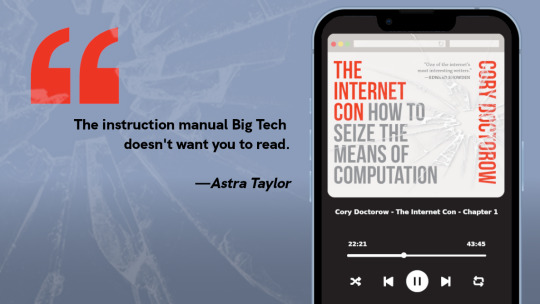
I'm kickstarting the audiobook for "The Internet Con: How To Seize the Means of Computation," a Big Tech disassembly manual to disenshittify the web and make a new, good internet to succeed the old, good internet. It's a DRM-free book, which means Audible won't carry it, so this crowdfunder is essential. Back now to get the audio, Verso hardcover and ebook:
http://seizethemeansofcomputation.org

If you'd like an essay-formatted version of this post to read or share, here's a link to it on pluralistic.net, my surveillance-free, ad-free, tracker-free blog:
https://pluralistic.net/2023/08/18/openwashing/#you-keep-using-that-word-i-do-not-think-it-means-what-you-think-it-means

Image: Cryteria (modified) https://commons.wikimedia.org/wiki/File:HAL9000.svg
CC BY 3.0 https://creativecommons.org/licenses/by/3.0/deed.en
#pluralistic#llama-2#meta#openwashing#floss#free software#open ai#open source#osi#open source initiative#osd#open source definition#code is speech
253 notes
·
View notes
Text
Sega Dreamcast - Hydro Thunder (PAL-UK)
Title: Hydro Thunder
Developer: Midway Studios San Diego / Eurocom Entertainment Software
Publisher: Midway Home Entertainment
Release date: 5 November 1999
Catalogue No.: T-9702D-61
Genre: Speedboat Racing


This "launch title" (released on the same day as the system in the US) is my favorite Western import Dreamcast racing game of all time. Hydro Thunder is pure arcade bliss, with eye candy galore, simple controls, and some of the most exhilarating gameplay you'll ever experience in a video game. The Dreamcast port is noticeably more accurate to the arcade original on which it's based.



youtube
2 notes
·
View notes
Text







AARON by Harold Cohen (1973), University of California, San Diego. Harold Cohen was a pioneer in algorithmic computer art, and his system, AARON, is one of the longest-running, continually maintained AI systems in history. By 1971, he had developed a painting system and was a Visiting Scholar to Stanford’s Artificial Intelligence Lab (SAIL). AARON is the drawing software, defining a set of rules and forms that produce drawings on paper using a “turtle”—a small robot equipped with a marker. In the top three images we see the first turtle Cohen developed which went on tour to Documenta in Kassel, West Germany in 1977. The fourth image shows a later version of the turtle at SFMOMA in 1979, followed by an example of a drawing made by AARON in the same year. From 1980, the turtle was succeeded by a series of robot arms mounted on an XY-table as seen in the bottom two images; the first dating from 1980, and the other from 1995 which could colour its own images using a variety of brushes. “In all its versions prior to 1980, AARON dealt exclusively with internal aspects of human cognition. It was intended to identify the functional primitives and differentiations used in the building of mental images and, consequently, in the making of drawings and paintings. The program was able to differentiate, for example, between figure and ground and inside and outside, and to function in terms of similarity, division and repetition. Without any object-specific knowledge of the external world, AARON constituted a severely limited model of human cognition, yet the few primitives it embodied proved to be remarkably powerful in generating highly evocative images: images, that is, that suggested, without describing, an external world.” – How to Draw Three People in a Botanical Garden, Harold Cohen.
29 notes
·
View notes
Text
3 Books Every Twenty-Something Should Read (By a Twenty-Something)
(In no particular order)
The Defining Decade by Dr. Meg Jay
This book has been my go-to for various points of my college (and now post-grad) career. Whenever I felt that I was "lost" or had a "mid-life crisis", this book always came to the rescue.
In this book, Meg Jay goes through how to best use your 20s. Whether that be through relationships, hobbies, education and career choices. She also expands on the concept of developing identity capital which is a collection of things that make you, you. One of my favourite quotes by Meg is, "“Twentysomething is like airplanes, planes just leaving New York City-bound somewhere west. Right after takeoff, a slight course change is a difference between landing in either Seattle or San Diego. But once a plane is nearly in San Diego, only a big detour will redirect it to the northwest.”
2. Quit Like a Millionaire by Bryce Leung and Kristy Shen
This is a personal finance book that details how a Canadian couple, Bryce and Kristy, retired in their thirties. Both working as software engineers, they sought to buy a home in Toronto but found that getting into the housing market was out of reach. Instead, they opted to use the money that could have gone towards a house into the stock market where they were both able to retire and travel the world.
Reading this opened my eyes to the various possibilities and routes to financial independence. One that isn't defeatist about the current housing market, but rather optimistic about other possibilities!
3. The Almanack of Naval Ravikant
The writer, Naval Ravikant, is the founder of various companies in Silicon Valley and wrote a guide to building wealth and emotional well-being unlike anything else I've seen. Most books I read surrounding generating wealth are pretty redundant, but what I found by reading this book was that everything written was unique yet so simple.
#personal development#books#book reviews#naval#naval ravikant#the almanack of naval ravikant#kristy shen#bryce leung#fire#personal finance#fire movement#financial independence#the defining decade#meg jay#defining decade#book#roncy89
3 notes
·
View notes
Text
The Dawn of AI (Paperwar) by Ryan LeKodak
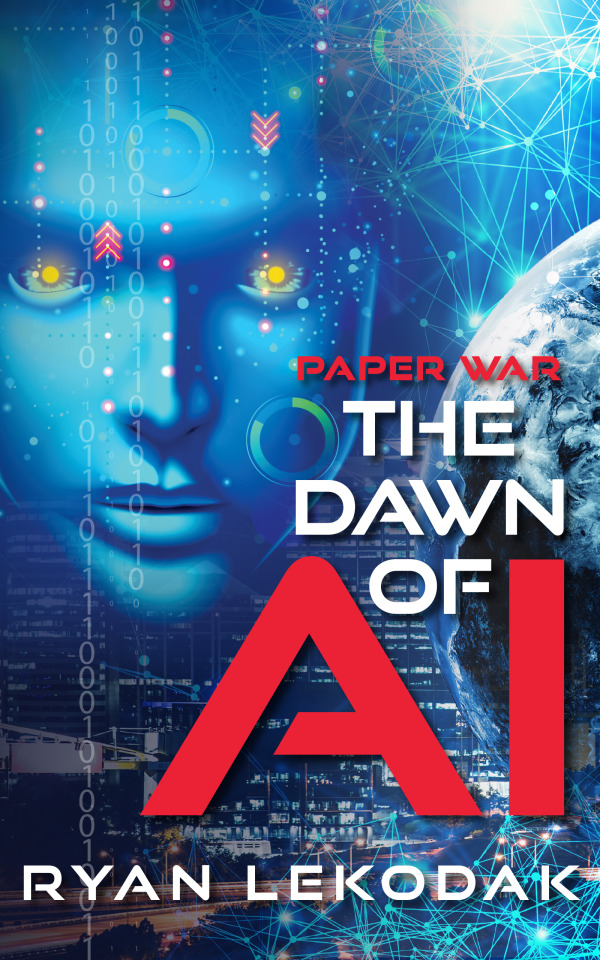
Book Summary:
One malfunction…
Millions dead…
The search for answers begins…
In the year 2040, the world's transportation is dominated by a highly advanced artificial intelligence system.
However, this seemingly perfect technology collapses, resulting in catastrophic disasters and the loss of millions of lives worldwide.
The disaster is dubbed Mayday, and its aftermath affects everyone. But was it simply a malfunction, or is there a more nefarious agenda at work? Who is accountable for the mass slaughter, and why was it carried out?
Order your copy and find out if the rise of AI, will be the fall of civilization!
Buy the Book – Amazon
Reviews:
★★★★★“LeKodak's stellar debut is a science fiction thriller that utilizes elements of speculative fiction, apocalyptic fiction, and conspiratorial mystery in a globe-hopping narrative that chronicles a group of adventurers trying to unravel who—or what—was behind a software malfunction that killed tens of millions of innocent people. It is well-written, relentlessly paced, and thematically profound, and will surely appeal to fans of SF thrillers by luminaries like Clarke, Dick, and Crichton. This is the good stuff.”
Paul Goat Allen, BlueInk Review
★★★★★“It's refreshing to see a talented author like LeKodak take the trope into the dystopian disaster novel niche and deliver an action-packed tale that gives just as many blockbuster thrills as it does intelligent technological questions. The plot and its themes are the primary focus, but in the ensemble cast of characters caught in the crossfire, each one has good solid development and moments to shine. I recommend The Dawn of AI to enthusiasts of intricately penned and exciting science fiction everywhere."
K.C. Finn, Readers' Favorite Book Review
★★★★★“The characters are extremely well developed, which is quite an accomplishment given how many there are. The most intriguing characters to me are conjoined twins with incredible story arcs and whenever the point of view kicked back to them, for me, it was like a favorite song playing again on the radio."
Jamie Michele, Readers' Favorite Book Review
★★★★★“The Dawn of AI connects the dots between characters that I neither expected nor saw coming in a story configuration that has an after-before-after pattern. I love this configuration as it hooks immediately and then goes back to fill in the blanks after I am invested in the plot. Excellent storytelling. Very highly recommended."
Asher Syed, Readers' Favorite Book Review
★★★★★“With the rise of Artificial Intelligence being a hot topic in the real world right now, I’m grateful to see such thought-provoking stories that explore this emergent technology's potential. This book is an easy recommendation to anyone interested in exciting science fiction, which takes a prevailing concern of today's world and explores it with intelligence and consideration."
Lexie Fox, Readers' Favorite Book Review
★★★★★“The pitfalls of giving the machines too much control play out in the storyline of Ryan LeKodak's novel. His take on an apocalyptic event is so vivid it is frightening to contemplate. The Dawn of AI is a science fiction aficionado’s dream novel."
Essien Asian, Readers' Favorite Book Review
★★★★★“In a world where jobs and livelihoods are being increasingly threatened by AI’s potential, this book is a reminder that machine malfunctions will inevitably happen.”
Theresa Kadair, Los Angeles Book Review
About the Author:
Ryan LeKodak is a science fiction author who lives in San Diego, California with his family. After emigrating from Vietnam in 1980 by boat, Ryan dreamed of becoming a doctor and nothing more. But upon learning the sight of blood made him squeamish, he pivoted from premed to begin a thirty-plus-year career in high-tech engineering, IT, quality assurance, and operations. Now a cybersecurity program manager based in San Diego, Ryan juggles a hectic career, raising his twin sons, and appeasing a needy Poochon puppy. At home, his lively boys take center stage, and their colorful comic doodles, adolescent puns, and wildly exaggerated stories from school inspired him to craft fast-paced science-fiction thrillers that explore the ominous potential of a future where AI surpasses human control. Through his writing, Ryan champions the extraordinary strengths that reside within each of us and celebrates the individual quirks that lighten fantastic worlds on the brink of disaster.
3 notes
·
View notes
Text
The Dawn of AI (Paperwar) by Ryan LeKodak

Book Summary:
One malfunction…
Millions dead…
The search for answers begins…
In the year 2040, the world's transportation is dominated by a highly advanced artificial intelligence system.
However, this seemingly perfect technology collapses, resulting in catastrophic disasters and the loss of millions of lives worldwide.
The disaster is dubbed Mayday, and its aftermath affects everyone. But was it simply a malfunction, or is there a more nefarious agenda at work? Who is accountable for the mass slaughter, and why was it carried out?
Order your copy and find out if the rise of AI, will be the fall of civilization!
Buy the Book – Amazon
Reviews:
★★★★★“LeKodak's stellar debut is a science fiction thriller that utilizes elements of speculative fiction, apocalyptic fiction, and conspiratorial mystery in a globe-hopping narrative that chronicles a group of adventurers trying to unravel who—or what—was behind a software malfunction that killed tens of millions of innocent people. It is well-written, relentlessly paced, and thematically profound, and will surely appeal to fans of SF thrillers by luminaries like Clarke, Dick, and Crichton. This is the good stuff.”
Paul Goat Allen, BlueInk Review
★★★★★“It's refreshing to see a talented author like LeKodak take the trope into the dystopian disaster novel niche and deliver an action-packed tale that gives just as many blockbuster thrills as it does intelligent technological questions. The plot and its themes are the primary focus, but in the ensemble cast of characters caught in the crossfire, each one has good solid development and moments to shine. I recommend The Dawn of AI to enthusiasts of intricately penned and exciting science fiction everywhere."
K.C. Finn, Readers' Favorite Book Review
★★★★★“The characters are extremely well developed, which is quite an accomplishment given how many there are. The most intriguing characters to me are conjoined twins with incredible story arcs and whenever the point of view kicked back to them, for me, it was like a favorite song playing again on the radio."
Jamie Michele, Readers' Favorite Book Review
★★★★★“The Dawn of AI connects the dots between characters that I neither expected nor saw coming in a story configuration that has an after-before-after pattern. I love this configuration as it hooks immediately and then goes back to fill in the blanks after I am invested in the plot. Excellent storytelling. Very highly recommended."
Asher Syed, Readers' Favorite Book Review
★★★★★“With the rise of Artificial Intelligence being a hot topic in the real world right now, I’m grateful to see such thought-provoking stories that explore this emergent technology's potential. This book is an easy recommendation to anyone interested in exciting science fiction, which takes a prevailing concern of today's world and explores it with intelligence and consideration."
Lexie Fox, Readers' Favorite Book Review
★★★★★“The pitfalls of giving the machines too much control play out in the storyline of Ryan LeKodak's novel. His take on an apocalyptic event is so vivid it is frightening to contemplate. The Dawn of AI is a science fiction aficionado’s dream novel."
Essien Asian, Readers' Favorite Book Review
★★★★★“In a world where jobs and livelihoods are being increasingly threatened by AI’s potential, this book is a reminder that machine malfunctions will inevitably happen.”
Theresa Kadair, Los Angeles Book Review
About the Author:
Ryan LeKodak is a science fiction author who lives in San Diego, California with his family. After emigrating from Vietnam in 1980 by boat, Ryan dreamed of becoming a doctor and nothing more. But upon learning the sight of blood made him squeamish, he pivoted from premed to begin a thirty-plus-year career in high-tech engineering, IT, quality assurance, and operations. Now a cybersecurity program manager based in San Diego, Ryan juggles a hectic career, raising his twin sons, and appeasing a needy Poochon puppy. At home, his lively boys take center stage, and their colorful comic doodles, adolescent puns, and wildly exaggerated stories from school inspired him to craft fast-paced science-fiction thrillers that explore the ominous potential of a future where AI surpasses human control. Through his writing, Ryan champions the extraordinary strengths that reside within each of us and celebrates the individual quirks that lighten fantastic worlds on the brink of disaster.
2 notes
·
View notes
Text
The Dawn of AI (Paperwar) by Ryan LeKodak
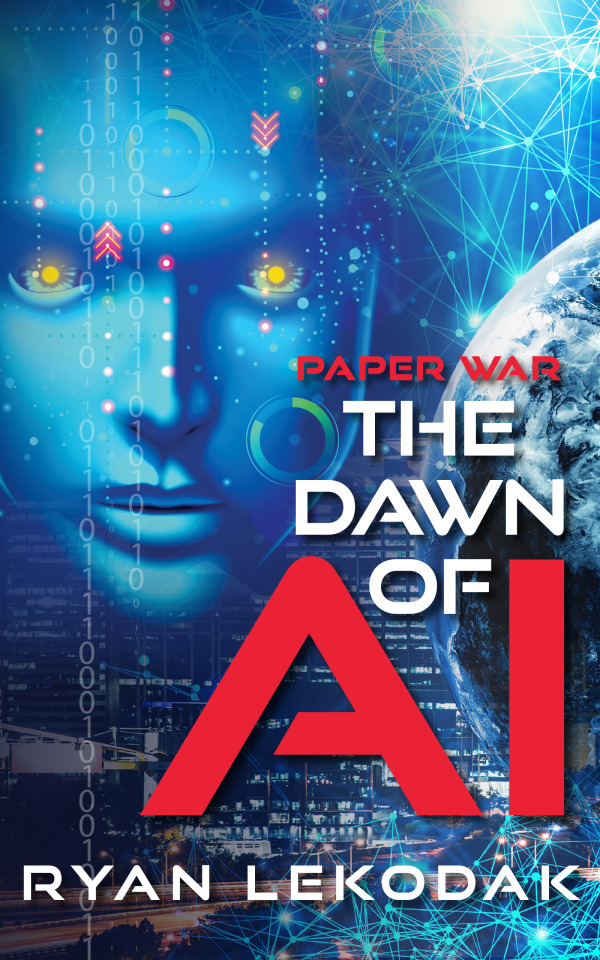
Book Summary:
One malfunction…
Millions dead…
The search for answers begins…
In the year 2040, the world's transportation is dominated by a highly advanced artificial intelligence system.
However, this seemingly perfect technology collapses, resulting in catastrophic disasters and the loss of millions of lives worldwide.
The disaster is dubbed Mayday, and its aftermath affects everyone. But was it simply a malfunction, or is there a more nefarious agenda at work? Who is accountable for the mass slaughter, and why was it carried out?
Order your copy and find out if the rise of AI, will be the fall of civilization!
Buy the Book – Amazon
Reviews:
★★★★★“LeKodak's stellar debut is a science fiction thriller that utilizes elements of speculative fiction, apocalyptic fiction, and conspiratorial mystery in a globe-hopping narrative that chronicles a group of adventurers trying to unravel who—or what—was behind a software malfunction that killed tens of millions of innocent people. It is well-written, relentlessly paced, and thematically profound, and will surely appeal to fans of SF thrillers by luminaries like Clarke, Dick, and Crichton. This is the good stuff.”
Paul Goat Allen, BlueInk Review
★★★★★“It's refreshing to see a talented author like LeKodak take the trope into the dystopian disaster novel niche and deliver an action-packed tale that gives just as many blockbuster thrills as it does intelligent technological questions. The plot and its themes are the primary focus, but in the ensemble cast of characters caught in the crossfire, each one has good solid development and moments to shine. I recommend The Dawn of AI to enthusiasts of intricately penned and exciting science fiction everywhere."
K.C. Finn, Readers' Favorite Book Review
★★★★★“The characters are extremely well developed, which is quite an accomplishment given how many there are. The most intriguing characters to me are conjoined twins with incredible story arcs and whenever the point of view kicked back to them, for me, it was like a favorite song playing again on the radio."
Jamie Michele, Readers' Favorite Book Review
★★★★★“The Dawn of AI connects the dots between characters that I neither expected nor saw coming in a story configuration that has an after-before-after pattern. I love this configuration as it hooks immediately and then goes back to fill in the blanks after I am invested in the plot. Excellent storytelling. Very highly recommended."
Asher Syed, Readers' Favorite Book Review
★★★★★“With the rise of Artificial Intelligence being a hot topic in the real world right now, I’m grateful to see such thought-provoking stories that explore this emergent technology's potential. This book is an easy recommendation to anyone interested in exciting science fiction, which takes a prevailing concern of today's world and explores it with intelligence and consideration."
Lexie Fox, Readers' Favorite Book Review
★★★★★“The pitfalls of giving the machines too much control play out in the storyline of Ryan LeKodak's novel. His take on an apocalyptic event is so vivid it is frightening to contemplate. The Dawn of AI is a science fiction aficionado’s dream novel."
Essien Asian, Readers' Favorite Book Review
★★★★★“In a world where jobs and livelihoods are being increasingly threatened by AI’s potential, this book is a reminder that machine malfunctions will inevitably happen.”
Theresa Kadair, Los Angeles Book Review
About the Author:
Ryan LeKodak is a science fiction author who lives in San Diego, California with his family. After emigrating from Vietnam in 1980 by boat, Ryan dreamed of becoming a doctor and nothing more. But upon learning the sight of blood made him squeamish, he pivoted from premed to begin a thirty-plus-year career in high-tech engineering, IT, quality assurance, and operations. Now a cybersecurity program manager based in San Diego, Ryan juggles a hectic career, raising his twin sons, and appeasing a needy Poochon puppy. At home, his lively boys take center stage, and their colorful comic doodles, adolescent puns, and wildly exaggerated stories from school inspired him to craft fast-paced science-fiction thrillers that explore the ominous potential of a future where AI surpasses human control. Through his writing, Ryan champions the extraordinary strengths that reside within each of us and celebrates the individual quirks that lighten fantastic worlds on the brink of disaster.
2 notes
·
View notes
Text

U.S. Air Force starts modernizing the radar of the B-52 Stratofortress fleet
Diego Alves By Diego Alves 05/31/2023 - 1:00 PM in Military
A B-52H assigned to the 96º Bomber Squadron of the 2ª Bomber Wing prepares to refuel in the Rocky Mountains. USAF
In a significant step towards the modernization of the B-52 fleet, a 307th Bomb Wing B-52 bomber arrived at a Boeing facility in San Antonio to start the installation of the Active Electronically Scanned Array (AESA) radar system. This milestone marks the beginning of a crucial phase in the United States Air Force's B-52 Radar Modernization Program.
The AESA radar, set to replace the outdated radar technology of the 1960s, brings a series of enhanced features to the B-52 in areas of greatest threat. Colonel Louis Ruscetta, Senior Material Leader of the B-52 Program Office of the Air Force Life Cycle Management Center, expressed enthusiasm at the arrival of the radar, stating: "EFSA will greatly increase the navigation and targeting capabilities of the B-52."

The relatively "cheap" update with installation of the AESA radar represents one of the most significant updates in the history of the B-52 fleet.
The state-of-the-art AESA radar not only reinforces situational awareness, but also offers advanced navigation and targeting skills. In addition, its adaptive design allows the integration of new features through software modifications, ensuring that the aircraft remains at the forefront to deal with future threats.
The installation process is a collaborative effort between Boeing, the original B-52 equipment manufacturer, and Raytheon, a radar supplier selected for the "BUFF" radar modernization program. Taking advantage of Boeing's extensive experience on the B-52 platform and Raytheon's excellence in radar systems, this partnership aims to expedite the deployment of AESA radar. The government shelf solution minimizes development time and test schedules.

The B-52H is one of the current trios of long-range strategic bombers of the USAF. These aircraft routinely fly on long-term missions in support of combat operations and other training and test activities.
Valued at approximately $2.8 billion, the installation of the AESA radar represents one of the most significant updates in the history of the B-52 fleet. With initial operational capacity planned for 2027, this transformational enterprise guarantees the sustainability and combat effectiveness of the B-52 in the face of opponents of the future.
Raytheon's involvement as a radar supplier is critical to the success of the B-52 radar modernization program. Under the contract, Raytheon will take over the design, development, production and maintenance of active electronic scanning radar systems for the entire U.S. Air Force B-52 fleet. Based on your experience with the APG-79/APG-82 family of radars, Raytheon's advanced AESA radar will provide improved navigation reliability, improved mapping and detection range, and the ability to target multiple targets simultaneously.
Tags: Military AviationBoeing B-52 StratofortressAESA RadarsUSAF - United States Air Force / U.S. Air Force
Diego Alves
Diego Alves
Related news
INTERCEPTIONS
Romanian Air Force intercepts Russian aircraft in the Baltic region
31/05/2023 - 19:13
MILITARY
Simorgh transport aircraft developed in Iran performs first flight
05/31/2023 - 17:57
3 notes
·
View notes
Text
Software Development San Deigo
BitCot is a top software development company located in San Diego. Our goal is to bring your ideas to life by providing innovative solutions for businesses of all sizes. Our team of skilled software developers in San Diego is dedicated to creating dynamic and advanced software that meets your unique requirements. We are focused on delivering high-quality and affordable solutions that make your business run smoother, improve customer satisfaction, and foster growth. Whether you're a new startup or a well-established company, we can assist you in elevating your business with our customized software development services. For more information visit our website: https://www.bitcot.com/software-development-san-diego/
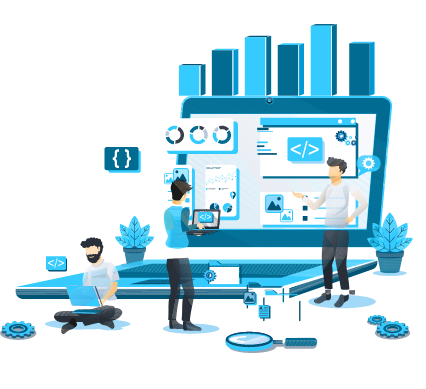
0 notes
Text
Custom Software Development Solutions
High Clarity delivers innovative custom software development solutions tailored to meet your business needs. Specializing in internet and web development, we craft scalable, user-friendly software that streamlines operations and drives growth. Our expert developers use cutting-edge technology to create custom applications that align with your goals. Whether you need web-based platforms, mobile apps, or e-commerce solutions, High Clarity ensures exceptional quality and performance. Trust us to transform your ideas into powerful digital solutions designed to enhance efficiency and deliver measurable results. Partner with High Clarity for tailored software development excellence.
0 notes
Text
The 10 Best Cities for Career Growth in 2025

When it comes to advancing your career, location matters more than ever. With remote work reshaping the job landscape and industries shifting rapidly, choosing the right city can significantly boost your professional trajectory. Whether you’re just starting or looking to leap, finding the cities with the best job market for young professionals is a smart move.
So, where should you be headed in 2025?
Below are the 10 best cities for career development—places that combine job opportunities, competitive salaries, and a supportive professional environment.
1. Austin, Texas
Tech, startups, and creative industries thrive in this area. With no state income tax, a collaborative community, and youthful energy, Austin remains one of the top cities for professional growth in 2025, especially for those in tech and innovation-driven fields.
2. Seattle, Washington
Home to giants like Amazon and Microsoft, Seattle offers impressive job opportunities in tech, healthcare, and engineering. Combine that with a strong entrepreneurial ecosystem, and you get one of the cities with the best job prospects for long-term career advancement.
3. Atlanta, Georgia
A growing tech and business hub, Atlanta provides strong career paths in finance, logistics, and media with a relatively low cost of living. It's also one of the best cities for career development for those seeking diversity and rapid professional growth.
4. Denver, Colorado
With a balanced lifestyle and booming industries like aerospace and green energy, Denver is an ideal destination for professionals seeking both opportunity and a high quality of life. It's also a great place for those who value outdoor recreation and sustainable urban planning.
5. Boston, Massachusetts
Boston’s blend of education, biotech, and finance makes it a top pick for those wanting to grow in cutting-edge industries. It’s especially attractive for recent graduates and young professionals looking to connect with world-class institutions and mentors.
6. Raleigh, North Carolina
Part of the Research Triangle, Raleigh is a hotspot for innovation, offering a steady stream of opportunities in tech, research, and education. The city is also known for its affordability and high quality of life, adding to its appeal.
7. San Diego, California
San Diego is drawing talent with jobs in biotech, defence, and clean energy. A warm climate, great work-life balance, and growing innovation ecosystem make it one of the top cities for professional growth in 2025.
8. Salt Lake City, Utah
This rising star boasts a strong job market in fintech, healthcare, and software, making it one of the best cities for career development if you’re looking for growth in emerging sectors. It's also gaining recognition for its startup-friendly environment.
9. Nashville, Tennessee
Beyond the music scene, Nashville is becoming a hub for healthcare, publishing, and tech, with a growing population of young professionals. It's especially ideal for those looking to make meaningful connections in a supportive, fast-growing city.
10. Chicago, Illinois
With its diverse economy and central location, Chicago remains one of the cities with the best job markets for young professionals, particularly in finance, consulting, and the manufacturing sector. The city also offers rich cultural experiences, and an affordable cost of living compared to other major metros.
Final Thoughts
In a rapidly evolving world, where you live can shape your career trajectory. These ten cities aren’t just places to live—they're launchpads for your professional future. Whether you're chasing innovation, stability, or community, these cities with the best job prospects have something for every ambitious professional in 2025.
0 notes
Text
When to Hire a Bookkeeping Virtual Assistant

Every thriving business—regardless of size—eventually reaches a point where managing finances internally becomes more of a burden than a benefit. Whether you're a solopreneur juggling multiple roles or a mid-sized company scaling fast, there’s one strategic move that can free your time and increase financial accuracy: hiring a Bookkeeping Virtual Assistant. From handling transaction entries to reconciling bank statements, these remote professionals are becoming vital in maintaining organized, up-to-date books. Particularly across business-heavy states like Texas, California, North Carolina, and Florida, the demand for virtual bookkeeping talent is rising as local entrepreneurs seek smart, cost-effective financial solutions.
Signs It's Time to Hire a Bookkeeping Virtual Assistant
You're Spending Too Much Time on Financial Tasks
Business owners often wear many hats, but spending hours on bookkeeping can distract from core responsibilities. If you find yourself working late reconciling receipts or manually updating spreadsheets, it's time to bring in a Bookkeeping Virtual Assistant.
Reduced Focus on Business Development
In places like Dallas or Miami, where market competition is fierce, losing focus on strategy and customer relationships can lead to stagnation. Delegating financial tasks can free up critical thinking space.
Your Financial Records Are Frequently Disorganized
Messy ledgers, inconsistent records, or missed entries are major red flags. A Bookkeeping Virtual Assistant brings structure and consistency to your books, reducing the chances of error or non-compliance.
Impact on Tax Season and Audits
Come tax time, especially in states with complex sales tax laws like New York or California, unorganized records can mean missed deductions or costly fines.
You're Scaling Rapidly and Need Financial Structure
With growth comes complexity. If your business is adding staff, expanding locations, or onboarding clients quickly, your bookkeeping system needs to keep pace.
Building Financial Infrastructure
Hiring a Bookkeeping Virtual Assistant at this stage can help establish scalable, repeatable processes that evolve with your business.
Services Provided by a Bookkeeping Virtual Assistant
Day-to-Day Transaction Recording
From daily sales logs to petty cash entries, your VA can maintain a clear picture of your cash flow. This is especially important for retail stores or restaurants in bustling locales like Charlotte or San Diego.
Bank and Credit Card Reconciliation
Regular reconciliation ensures that your books match actual financial activity. It also identifies discrepancies before they become larger issues.
Invoicing and Payment Follow-Ups
A Bookkeeping Virtual Assistant can create and send invoices, follow up on payments, and even apply late fees when appropriate.
Payroll Support
Though not a replacement for a full payroll service, your assistant can prepare timesheets, calculate hours, and ensure accurate payroll records.
Benefits of Hiring a Bookkeeping Virtual Assistant
Cost Savings
Hiring a full-time, in-house bookkeeper comes with overhead: salary, benefits, and office space. In contrast, virtual assistants offer a flexible and affordable solution.
Local Savings in High-Cost Areas
Businesses in high-cost urban centers like San Francisco or Chicago can reduce staffing expenses by outsourcing remotely.
Improved Accuracy
Professionally trained virtual assistants reduce human error, ensure compliance, and often catch discrepancies early on.
Enhanced Productivity
You can redirect the time and mental bandwidth spent on bookkeeping to revenue-generating activities, client acquisition, or team leadership.
Choosing the Right Bookkeeping Virtual Assistant
Look for Experience in Your Industry
Whether you run a tech startup in Austin or a medical clinic in Raleigh, an assistant with relevant experience understands your needs better.
Ask for Software Proficiency
Most skilled VAs are well-versed in QuickBooks, Xero, Zoho Books, or Wave. Confirm that they can work with your preferred platform.
Define the Scope Clearly
Do you need someone part-time or full-time? Will they also handle reporting or just data entry? Define this upfront to avoid mismatched expectations.
Test with a Trial Period
Start with a trial month or specific project to evaluate accuracy, responsiveness, and reliability.
Local Expertise Adds More Value
Familiarity with State-Specific Regulations
Some financial obligations vary by location. For example, sales tax filing in Texas differs from that in New York. A Bookkeeping Virtual Assistant who understands your local rules can make a huge difference.
Time Zone Alignment and Availability
Working with someone in a similar time zone—such as a Virginia-based assistant supporting a DC company—facilitates real-time communication and task updates.
Real-Life Scenarios That Call for a Bookkeeping VA
E-commerce Stores Expanding Nationally
Online sellers need updated books to manage inventory, sales tax compliance, and multi-platform revenue streams. A VA ensures that Shopify, Amazon, and WooCommerce data all reconcile correctly.
Professional Service Firms Growing Their Client Base
Lawyers, consultants, and therapists managing multiple client invoices and retainers benefit from having a dedicated assistant who ensures nothing slips through the cracks.
Seasonal Businesses With Fluctuating Needs
Businesses like landscaping, tax prep, or event planning often need bookkeeping help during peak seasons. A Bookkeeping Virtual Assistant offers the flexibility to ramp up or scale down.
Conclusion
Hiring a Bookkeeping Virtual Assistant is a strategic investment, not just a cost-saving measure. It enables entrepreneurs and business owners to focus on what they do best, while ensuring financial health and growth readiness. Whether you're running a family business in Florida, a consulting firm in Illinois, or a startup in California, the time to bring in a virtual bookkeeping expert might be now. Don't wait until the paperwork piles up or tax season looms—transition smartly and scale securely.
FAQs
What does a Bookkeeping Virtual Assistant do?
They handle transaction entry, invoice management, bank reconciliation, payroll prep, and reporting—all remotely.
How do I know it’s time to hire a bookkeeping VA?
If you're spending too much time on bookkeeping, struggling with disorganized finances, or scaling fast, it's time to hire help.
Is it safe to share financial data with a VA?
Yes. With proper tools (encrypted software, secure file-sharing platforms) and NDAs, data can be shared safely.
What’s the cost of hiring a Bookkeeping Virtual Assistant?
Rates vary based on experience and scope, but typically range between $20 and $50 per hour or a monthly retainer.
Can they help with taxes?
They don't file taxes but can prepare and organize all necessary documentation for your accountant or CPA.
What qualifications should I look for?
Experience with bookkeeping software, understanding of U.S. accounting principles, and industry-specific knowledge are key.
How do I manage and communicate with a remote VA?
Use tools like Slack, Trello, Asana, Zoom, or Google Workspace for seamless communication and task management.
Can a VA work with my current accounting team?
Absolutely. They can complement your existing staff by handling daily operations and letting senior members focus on strategy.
Do I need to provide access to bank accounts?
Some tasks may require view-only access. Always follow security best practices and limit permissions as needed.
How quickly can a VA be onboarded?
With clear documentation and expectations, most VAs can be onboarded in under a week.
#Bookkeeping virtual assistant#outsourcing accounting services#Outsourced bookkeeping services#Remote Bookkeeping Services#bookkeeping and accounting
0 notes